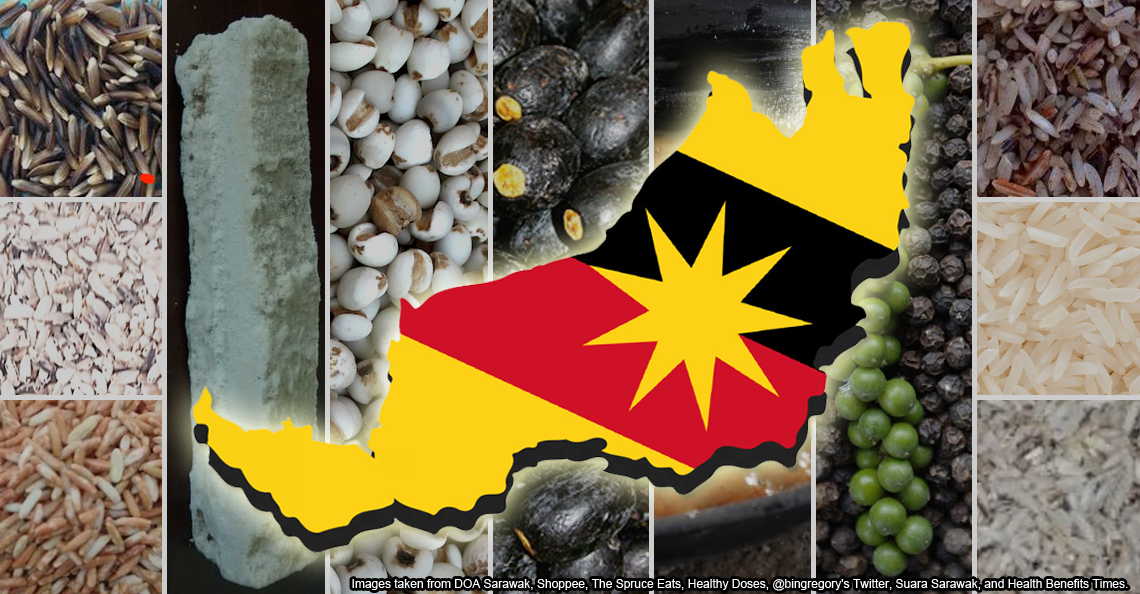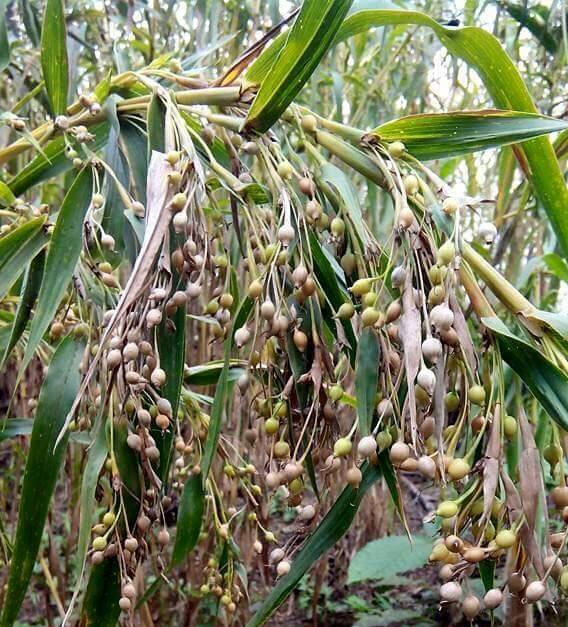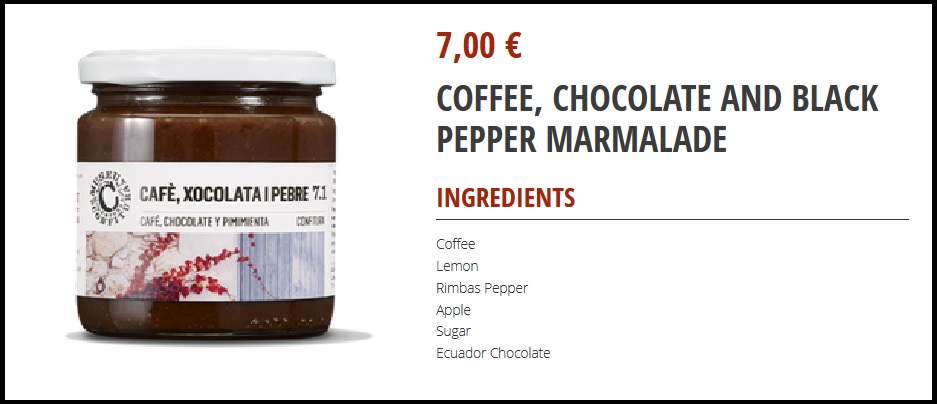These 11 foods from Sarawak made it into an international list of… endangered foods?

- 303Shares
- Facebook295
- LinkedIn1
- Email2
- WhatsApp5
Here’s a quick question. What do palm sugar, nipah salt, and bario rice have in common?
Well, obviously they’re food ingredients, but that’s only part of the picture. These three ingredients are among several food ingredients from Malaysia included in the Ark of Taste, an international catalog that among other things compiles ‘delicious and distinctive foods facing extinction‘. To date, the catalog lists over 5,000 fancy-sounding foods from around the world, like Bulgaria’s Belishki onions and the Beguet coffee from the Philippines, and including the three mentioned earlier, Malaysia has 11 entries in the catalog.
“The Ark of Taste travels the world collecting small-scale quality productions that belong to the cultures, history and traditions of the entire planet: an extraordinary heritage of fruits, vegetables, animal breeds, cheeses, breads, sweets and cured meats…” – excerpt from Slow Food Foundation for Diversity.
“So, uh… should we be proud or something?” you might ask. For starters, it implies that some people found our food ingredients ‘delicious and distinctive’, so that’s a start. And in the list of things that Malaysians like hearing about, one of them is probably mentions of ‘Malaysia’ in international stuff and rankings… with some exceptions.

Still, we’re pretty sure that a lot of us have lived as long as we had without ever hearing about this Ark of Taste stuff, so you might have some questions. Like, is being in the catalog a good thing? What does being in the catalog do for us? Malaysia got rare foods meh? And who has so much free time to come up with this whole Ark of Taste thing anyway?
For that last question, well, the Ark of Taste is part of a bigger global movement called Slow Food, and funnily enough, this whole story started because…
An Italian guy got mad by a McDonalds opening in Rome

As evidenced by various videos of Italian grandmas dissing food online, them Italians take their food seriously, so an Italian guy getting so annoyed by a fast food chain that he started a global movement against them might not seem so weird. As the story goes, in 1986 McDonalds opened its first franchise in Italy near the historic Spanish Steps in Rome, much to the ayys and whoas of thousands of Italian protesters.
Besides the restaurant’s placement being the equivalent of pasting a Supreme sticker on to the Mona Lisa, some also feared that the advent of fast food will erode their rich food heritage. This was the concern of an influential journalist named Carlo Petrini, who handed out plates of penne pasta to the protesters in protest. Ah the Italian-ness of it all.
“I was alarmed by the culturally homogenizing nature of fast food,” – Carlo Petrini, to Time Magazine.
Anyways, the McDonalds survived the protests, but at the very same year Petrini established the Slow Food association. Three years later, it became an international movement after 14 other countries signed a manifesto on Slow Food. Essentially, the manifesto rejects the fast lifestyle that condemns us to eating fast food all the time, and to ‘banish the degrading effects of Fast Food’, we should start at our own tables by ‘rediscovering the flavors and savors of regional cooking‘.

In simpler terms, the movement basically asks people to stop eating fast food and instead go for artisanal local foods that are threatened. To that end, the movement has been doing stuff to promote ‘slow food’ to the masses, and the Ark of Taste is just one of the initiatives under that. By putting a certain food or ingredient in the Ark, they hope to get people to keep eating them, and consequently for farmers to keep making them, ensuring that they don’t end up forgotten.
“Agricultural biodiversity and small–scale, family-based food production systems are in danger throughout the world due to industrialization, genetic erosion, changing consumption patterns, climate change, the abandonment of rural areas, migration, and conflict.” – Slow Food USA.
With that in mind, the 11 foods from Sarawak was probably included in the Ark for the same reason, and if you look at them, you’ll notice that…
Over half of the endangered foods are… different rice types?
Out of the 11 foods listed in the Ark, six of them are rice types that you can only find in Sarawak:
Rice planting is a bit different in Sarawak than it is on the Peninsula, with a significant amount of rice coming from smallholders who plant in a variety of places like hillsides and highlands, for example. This led to a variety of specialty rices that are different from one another in aroma, color, and taste. We’d like to list down the differences between each kind of rice here, but it won’t be accurate since we dunno which specific variety the Ark is referring to: Bario rice, for example, comes in several different colors. Others also have slight differences, but they’re all pretty special.

However, because of the small-scale production of Sarawak rice and some farmers focusing on artisanal rice (specialized kinds of high-quality rice grown and sold in small quantities), they risk going extinct since the few people who farm them are growing old and the new generation might not want to be farmers. At least, this is the Ark’s concern about the six types of rice they listed anyway.
This is also the reasoning behind the entry of most of the other ingredients.

- Nyeli (aka lingkau in Indonesia, aka Coix-lacryma jobi) is a kind of cereal grown on the borders of paddy fields. The Ark included it because it’s a labor-intensive Sarawakian crop that might be abandoned by the older farmers.
- Nipah salt is the salt obtained by drying and burning nipah stems and diluting the ashes, producing a smoky cake of salt that smells like nipah leaves. The Ark says it’s threatened by conventional salt.
- Nipah sugar (aka gula apong) is obtained by reducing the sap from the nipah flower into a thick, golden brown syrup. The Ark says it’s threatened by commercial white sugar.
The final two ingredients don’t seem to be endangered, but they’re included either to support local farmers, or to promote them.
- Rimbas black pepper is pepper grown in the area near the Rimbas river in Sarawak, although we can’t really tell how it’s different from regular black pepper. The reasoning given for including it into the Ark is that its cultivation isn’t as profitable as other crops, and it’s not as demanded as rice.
- Dabai is the blackish fruit of a native tree (Canarium odontophyllum) that can be eaten raw, with soy sauce/salt, or made into nasi goreng. It’s included because it’s ‘underutilized’ and should be promoted for its potential.

While we don’t really know to what extent do these foods’ inclusion into the Ark will help them, the existence of the Ark itself highlights an interesting idea…
Sometimes, to protect some foods, you have to encourage people to eat them
This may sound counter-intuitive, particularly when we think about wildlife like pangolins being traded illegally for their meat. One of the ways we can fight this illegal trade is by simply refusing to buy pangolin meat. If there’s no demand, there’s no reason for illegal poachers to catch pangolins anymore, thus conserving the wildlife. We can reverse this concept for foods cultivated by people: by increasing the demand for it, the small communities who make and grow the food will have a reason to keep making them.
Some people would call this concept ‘eater-based conservation‘, and it works well for agricultural products and wildlife that benefit from regular harvesting, like wild clams. By highlighting and promoting foods like bario rice or dabai, we can ensure that there will always be people who want to eat these foods, and where there’s demand, there will be people willing to continue planting and making them.
While we don’t have a real danger of these 11 foods from Sarawak disappearing just yet – the Sarawak government is pretty actively involved in recognizing their different kinds of rice, and many of the items can be found outside of Sarawak – just simply being recognized can make these foods more valuable in the eyes of some people: some would perhaps pay more for a steak if the sauce is made from Rimbas black pepper, instead of regular black pepper. So in a way, it’s a sort of incentive for people to grow Rimbas black pepper.

Despite all these advantages though, we should still be wary, lest things turned out the way it did for quinoa. Originally a humble grain from the area around Bolivia and Peru, quinoa became famous for its health benefits, and the local farmers started planting it en masse. However, while the increased demand elevated the life of the farmers and their communities, quinoa ironically became to expensive for the local people, who turned to cheaper foreign foods instead.
We’re not sure if we’ll ever see a day when Sarawakians no longer eat dabai because it good too expensive, but let’s keep the quinoa story as a reminder to do everything in moderation.
- 303Shares
- Facebook295
- LinkedIn1
- Email2
- WhatsApp5
